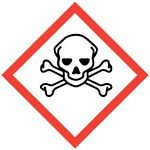| The Home page of ILPI's Safety Data Sheet (SDS) Resource, the leader in SDS information since 1995! | |
| The history and philosophy behind this resource. | |
| A curated collection of books and reference materials concerning Safety Data Sheets and closely related topics. | |
| Paste your plain text SDS into the SDS-Demystifier, and it will be converted into a hypertext-enriched document with links to detailed explanations of each key term. | |
| An extensive list of frequently asked questions about Safety Data Sheets including regulations, content, compliance, and more. | |
| A humorous take on Safety Data Sheet jargon. Fill in the blanks on our entry form to generate a personalized Unsafety Data Sheet to share with your coworkers. | |
| Since 1995, we've maintained this massive curated list of the best places to find Safety Data Sheets on the Internet. | |
| You are here! Way more than a glossary, this hypertext-enhanced resource covers hundreds of SDS-related terms and expert knowledge. Each entry includes both the SDS relevance and links to additional authoritative resources. | |
| Archived results of Safety Data Sheet related polls taken by some of our millions of site visitors | |
| The OSHA regulations behind SDS regulations, including the inspection guidelines and over 400 official interpretations letters under the Hazard Communication Standard | |
| Commercial suppliers of SDS authoring and management software as well as cloud compliance services. | |
| Commercial companies that will create SDS's for your specific needs as well as SDS translation companies. |

Safety signs, banners, and scoreboards? Get yours at Safety Emporium!
Definition
Dermal toxicity is the ability of a substance to poison people or animals by contact with the skin.
Additional Info
Under Appendix A of OSHA's Hazard Communication Standard, 29 CFR 1910.1200, acute dermal toxicity (from a single exposure) refers to adverse (harmful) effects occurring following dermal administration of a single dose of a substance to the skin, or multiple doses given within 24 hours. Paragraph A.1.2 of Appendix A outlines the hazard classification process for substances.
This classification process assigns an acute toxicity category of 1 through 4 with 1 being the most toxic and 4 the least according to these criteria for pure substances:
| Category 1 | Category 2 | Category 3 | Category 4 |
≤ 50 |
>50 and ≤ 200 |
>200 and ≤ 1000 |
>1000 and ≤ 2000 |
These values have units of mg/kg of body weight and are typically assigned on the basis of rat or rabbit studies. When the substance is a mixture of chemicals, the Standard lays out a series of principles to assign the hazard classification Category based on the acute dermal toxicity of each component and its percentage in the mixture.
If the hazard classification falls into Category 1, 2, or 3, the label and SDS must use the acute toxicity pictogram (a skull and crossbones within a red-framed diamond) and signal word:

See these enties for additional information on skin exposure to toxic or corrosive materials:
SDS Relevance
Dermal toxicity (if known and applicable) will be reported in Section 11 (toxicological information) of the material's Safety Data Sheet.
Toxic materials absorb through the skin to various degrees depending on their chemical composition and whether they are dissolved in a solvent.
Always wear proper personal protective equipment (PPE) such as gloves and aprons when working with a toxic (or nontoxic) substance that can be absorbed through the skin.
Proper glove selection is critical when working with chemicals. Latex or nitrile gloves do not protect against certain chemicals and solvents. In fact, wearing the wrong gloves has lead to death; see our entry on personal protective equipment for additional resources as well as the glove selection guide under Further Reading (below).

Encourage your workers to wear their gloves with stylish safety dispensers from Safety Emporium.
Further Reading
- Dermal Exposure at OSHA explains how to prevent skin exposure to chemicals in the workplace.
- Glove selection and usage at the University of California, San Diego. Includes info about latex allergies and more.
- The U.S. CDC's NIOSH has a web site devoted to Personal Protective Equipment (PPE) and includes topics such as Skin Exposures and Effects as well as Protective Clothing and Ensembles.
- Skin Anatomy (The Common Integument) from Gray's Anatomy.
- Dermal Absorption, EHC 325, an extensively detailed document developed by the WHO, ILO and UN.
- Anatomy of the Skin at Stanford Children's Health.
- Picture of the Skin at WebMD with a diagram and list of common skin conditions, tests, and treatments.
- The Annals of Emergency Medicine discusses Clinical Policy for the Initial Approach to Patients Presenting With Acute Toxic Ingestion or Dermal or Inhalation Exposure in Volume 33, Number 6, June 1999 (subscription required).
See also: cutaneous, dermal, dermatitis, PPE, vesicant.